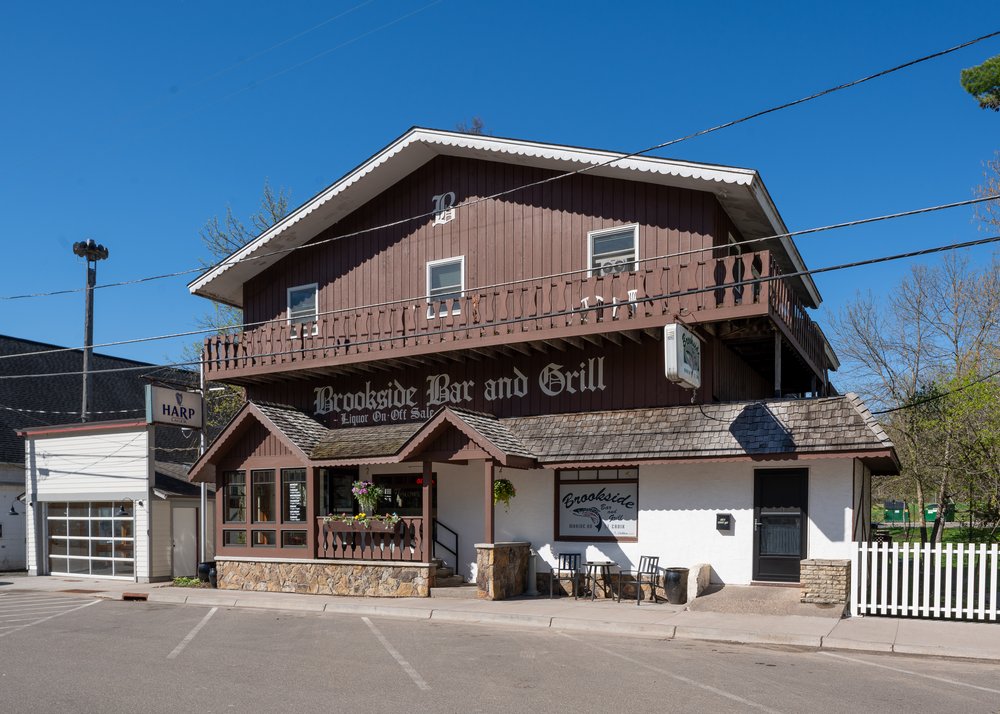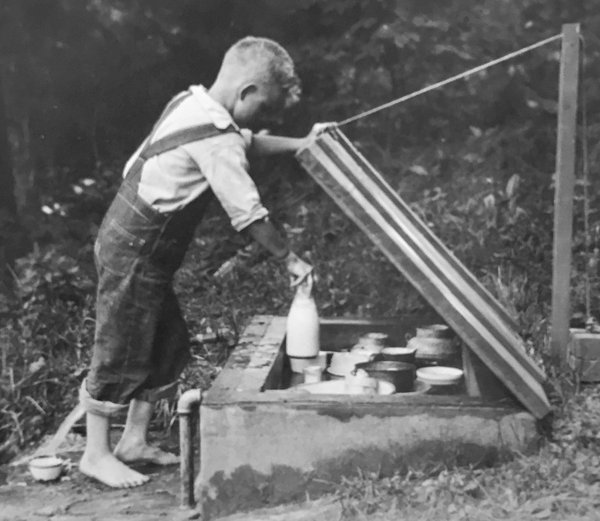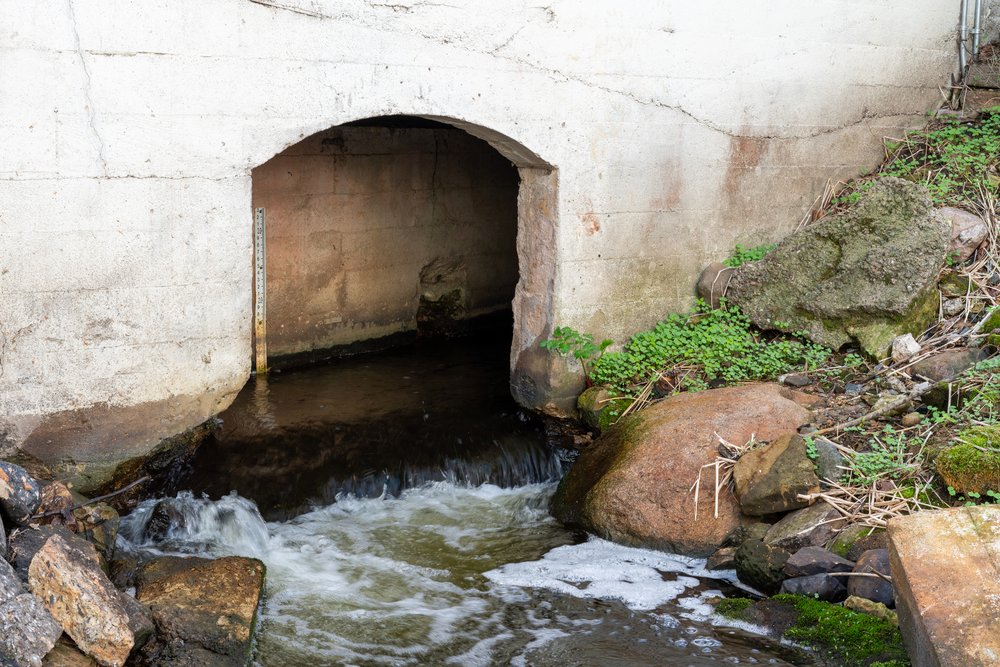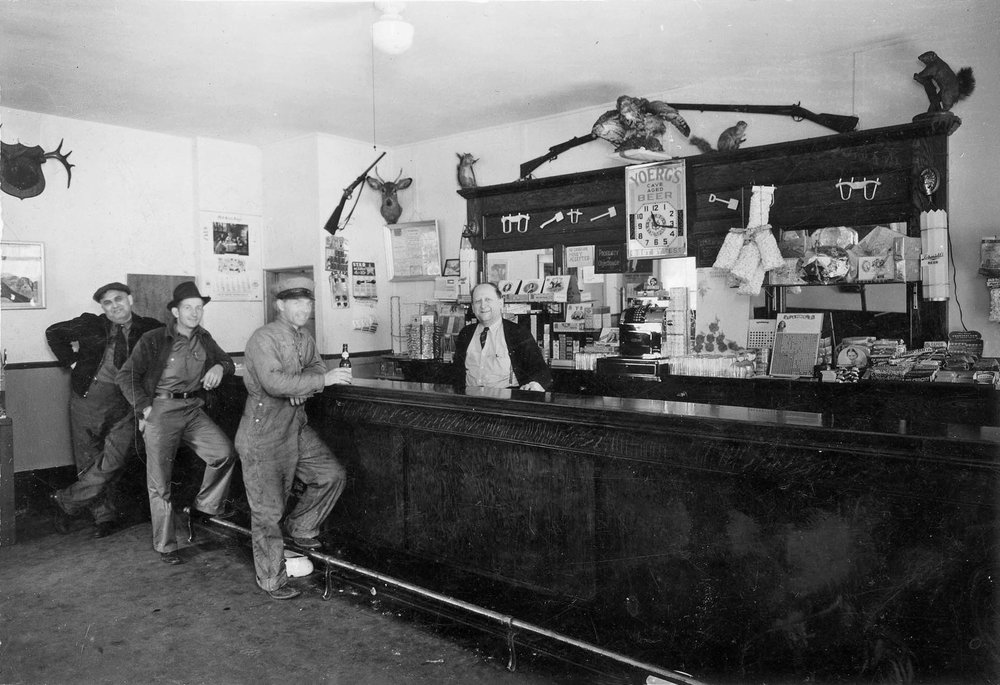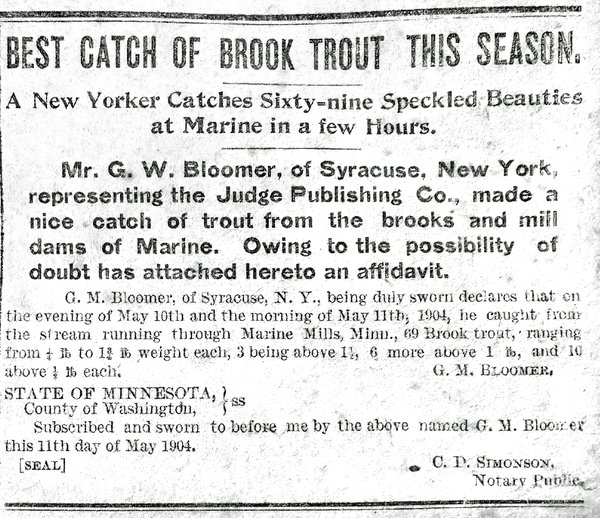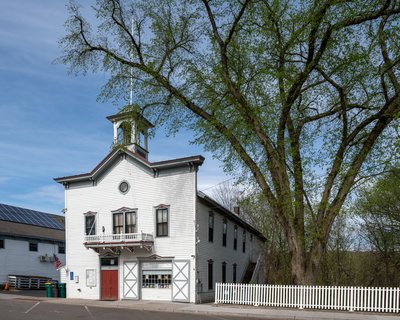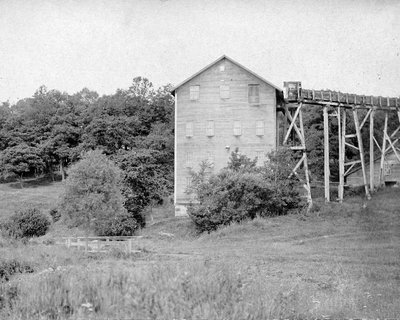The Marine Creamery
Before the twentieth century, this spot was an empty lot flanked by a blacksmith to the south and a livery to the north. Nobody wanted to build where the Mill Stream flowed under Judd Street. That changed when a group of entrepreneurs had an inspiration. In the days before modern refrigeration, residents often relied on spring boxes set in naturally cold springs to keep dairy products from spoiling. Why not put a creamery business here that could use the free refrigeration of the ice-cold Mill Stream instead of paying for ice?
Realizing that the Mill Stream was perfect for refrigerating dairy products, John Lindberg constructed a creamery building right over it with the stream running through the basement. The creamery, which started in 1930, was organized as a cooperative that sold shares of stock to local members. Despite the good idea, it failed almost immediately, costing many members their investment according to its president Ed Walquist.
Brookside Inn
When the creamery failed, the building was purchased by Frank Huff, who ran the Hotel St. Croix across the street. Huff moved the hotel’s retail business into the creamery building and renamed it the Brookside Inn.
Grandson William Huff recalled Frank Huff’s move:
He bought the building in 1930. It was built to be a creamery, but the creamery failed after about 9 months. Initially my grandfather operated it as a store … When prohibition ended in 1933, my grandfather applied for a liquor license and the Brookside was born. Inside, it was a U-shaped configuration [with] the bar on one side and a soda fountain/candy store on the other side where the kitchen is now … In the back there used to be a big walkout porch the width of the building. Also, on the north side exterior where the stream emerges was a sort of play area with a good-sized paddle wheel propelled by the stream. As a kid, I played there often when we visited, and I ate lots of ice cream at the old soda fountain. [William Huff communication to Andrew Kramer]
Brookside Bar & Grill
After Frank Huff died in 1945, Herluf and Ellen Nielson purchased the Brookside and installed the building’s “Danish” exterior. They continued to sell ice cream on the north side and alcohol on the south side.
On a community Facebook page, several Marine residents shared memories about Nielson’s Brookside:
Ice Cream and soft drinks on the north side. Beer on the left … I remember that we could walk down from the school … where we could buy an ice cream cone for 5 cents. That was my weekly allowance. [REH]
As young teens, my friends … and I felt independent going down there and getting cherry cokes or lime cokes. And it was the only place in Marine where you could go down alone and maybe meet a boy. [BR]
I have wonderful memories of The Brookside in the '50s, ice cream was the best treat. Mom referred to the South side as a "Tavern". Ice cream cones were usually enjoyed watching the water fall on either side of the street, a wonderful village to grow up in. [BC]
In 1968, new owner Roger Sparrows added second floor living quarters. Richard and Sandy Meister purchased the business in 1973, made some changes, and began operating it as the Brookside Bar and Grill.
When Meister started, hard liquor was still prohibited from sale in Marine. Proposals to change that had been placed on the ballot each year from 1968 to 1973. But the anti-liquor faction always prevailed, arguing that licensing hard liquor would “put drunks on the streets.” Finally in 1974, liquor sales were allowed back in Marine by a vote of 178 to 139.
The Mill Stream that still flows through the basement of the Brookside is a healthy native trout stream. Look carefully where the stream comes out from under the building and you might see trout lingering in the current.
— Andrew Kramer and the Marine Historic Signage Committee
